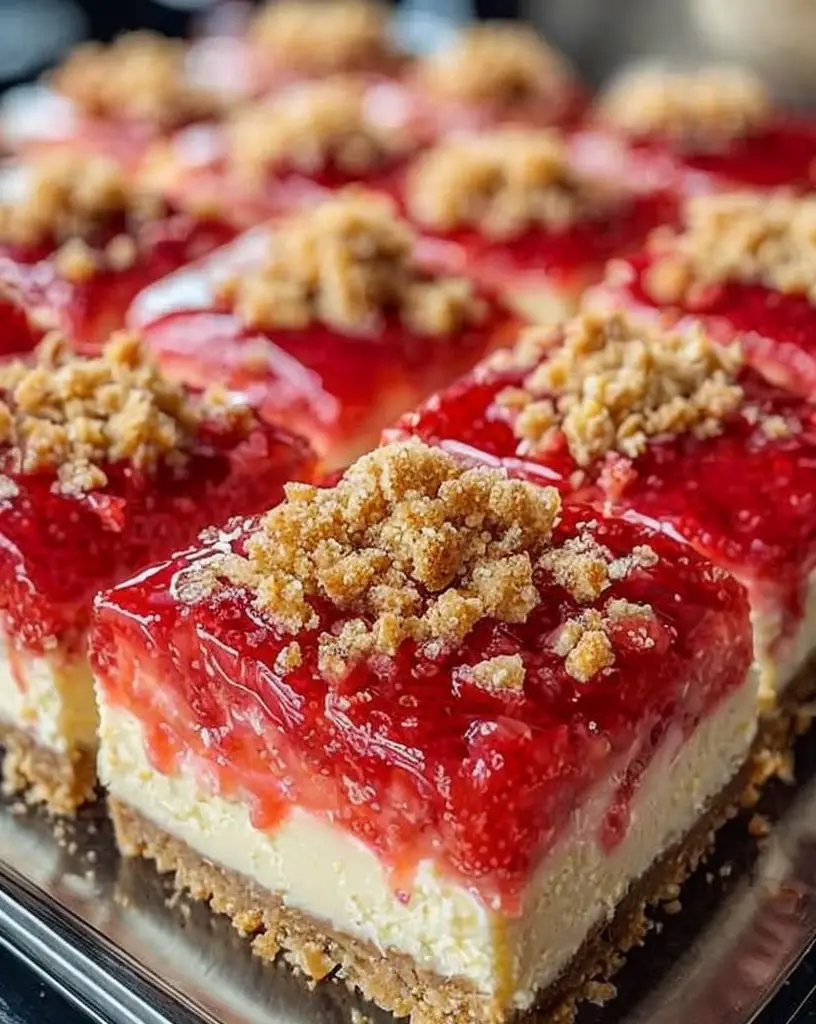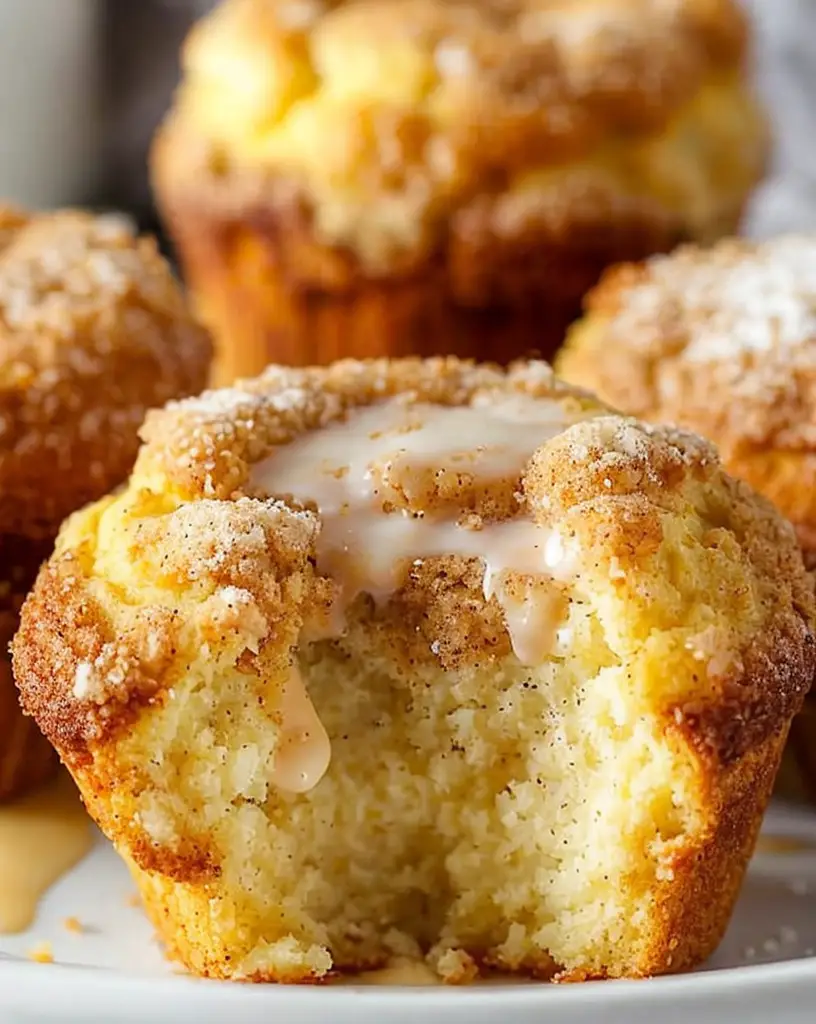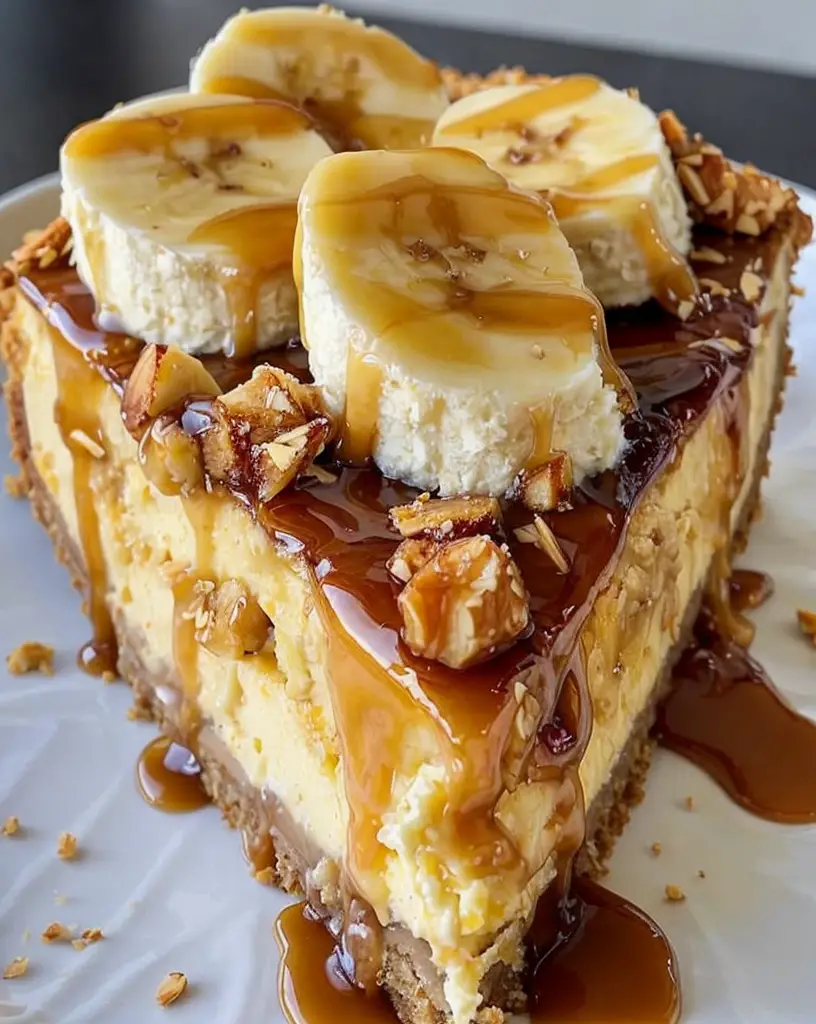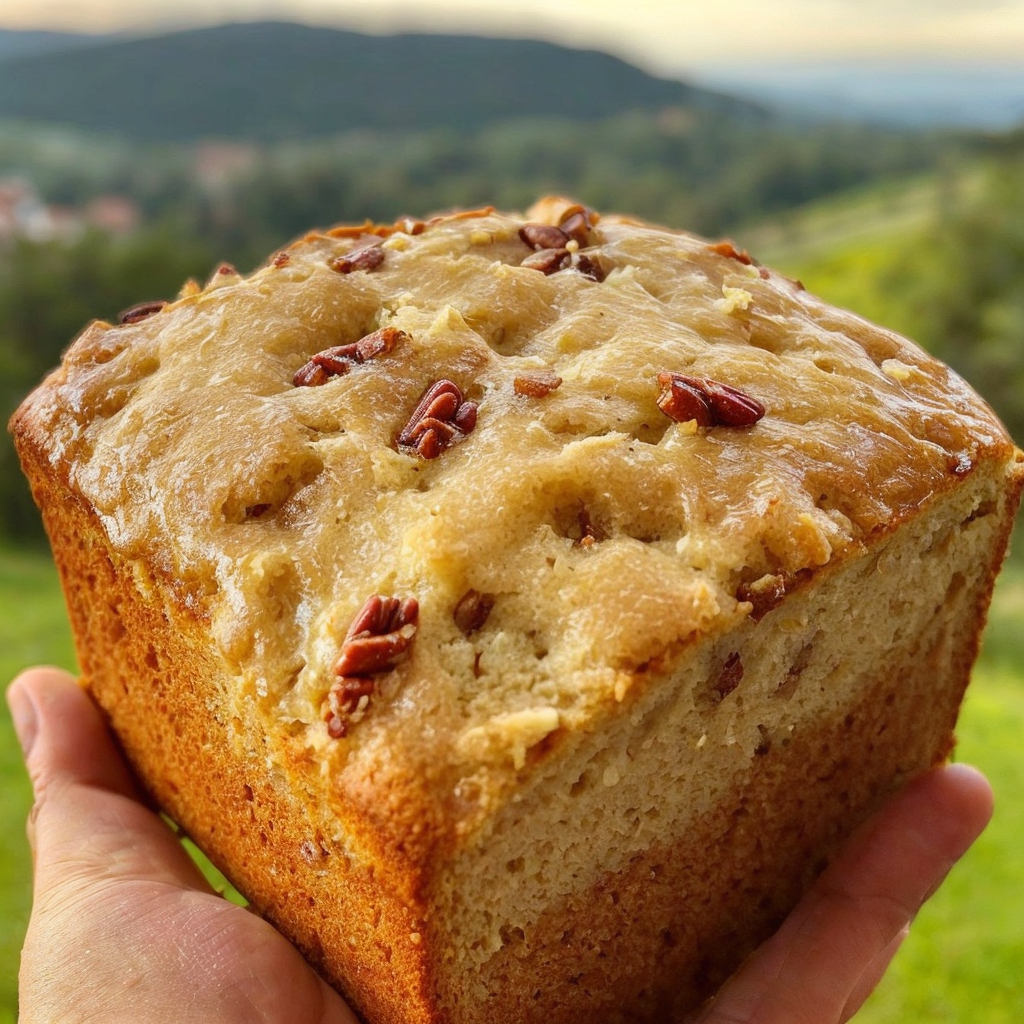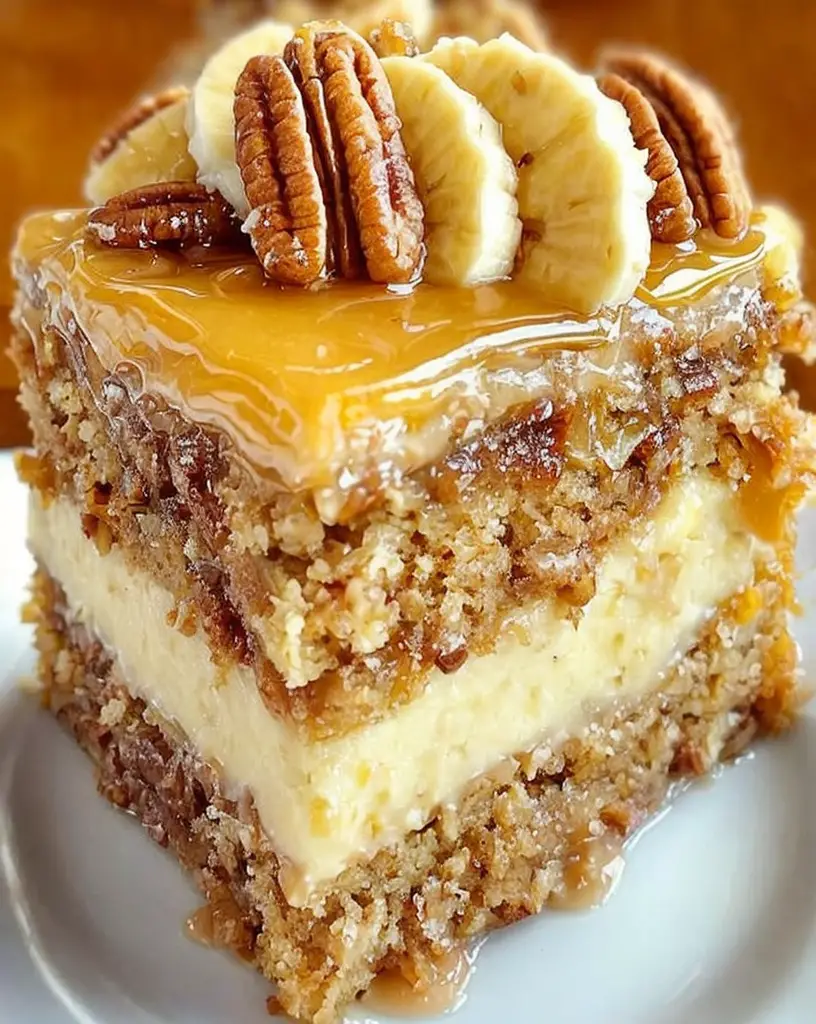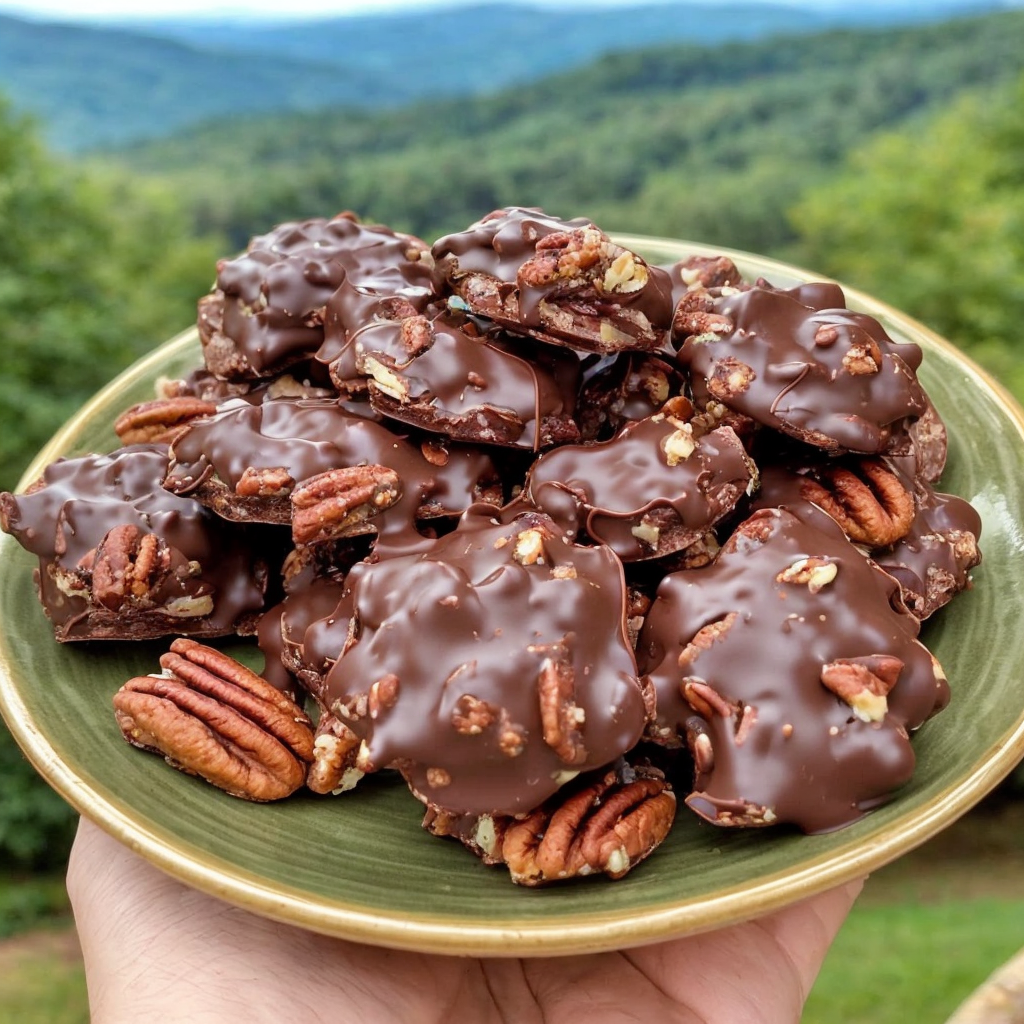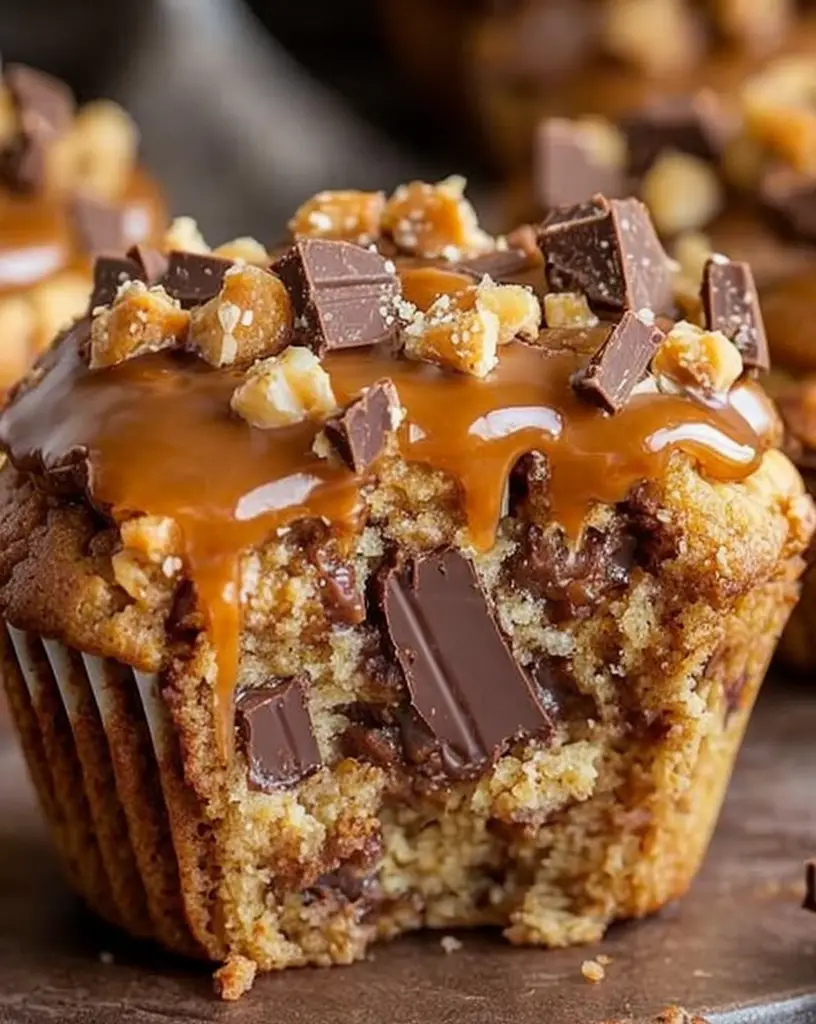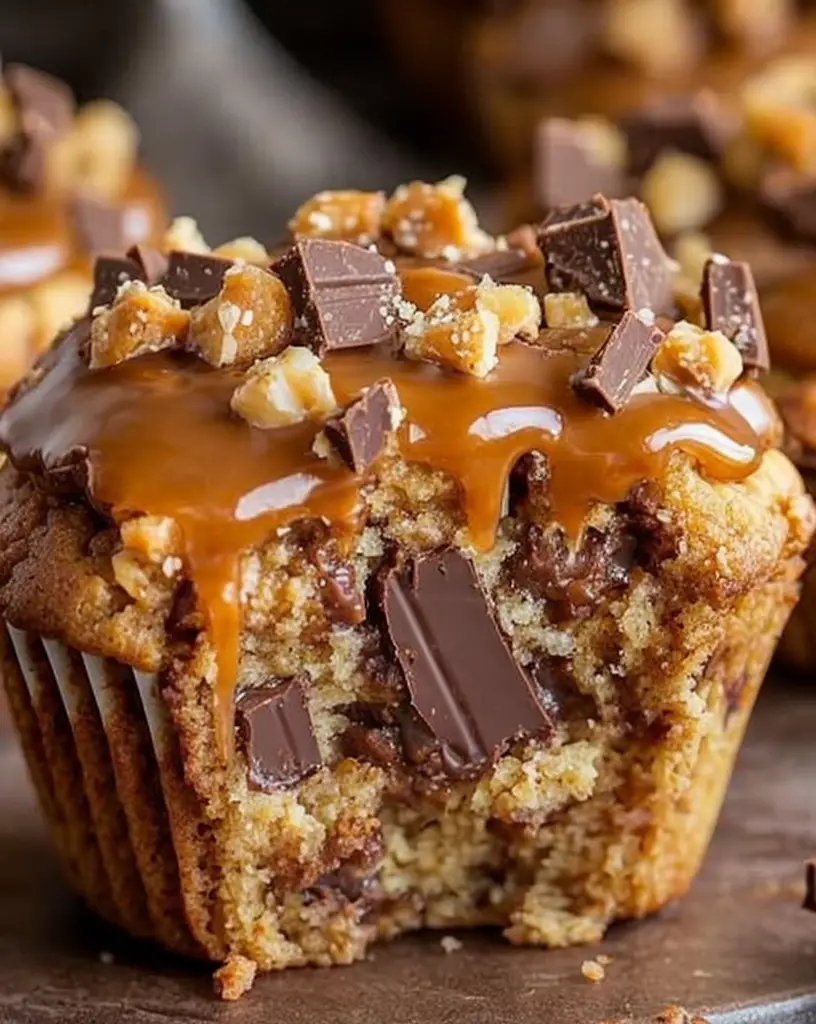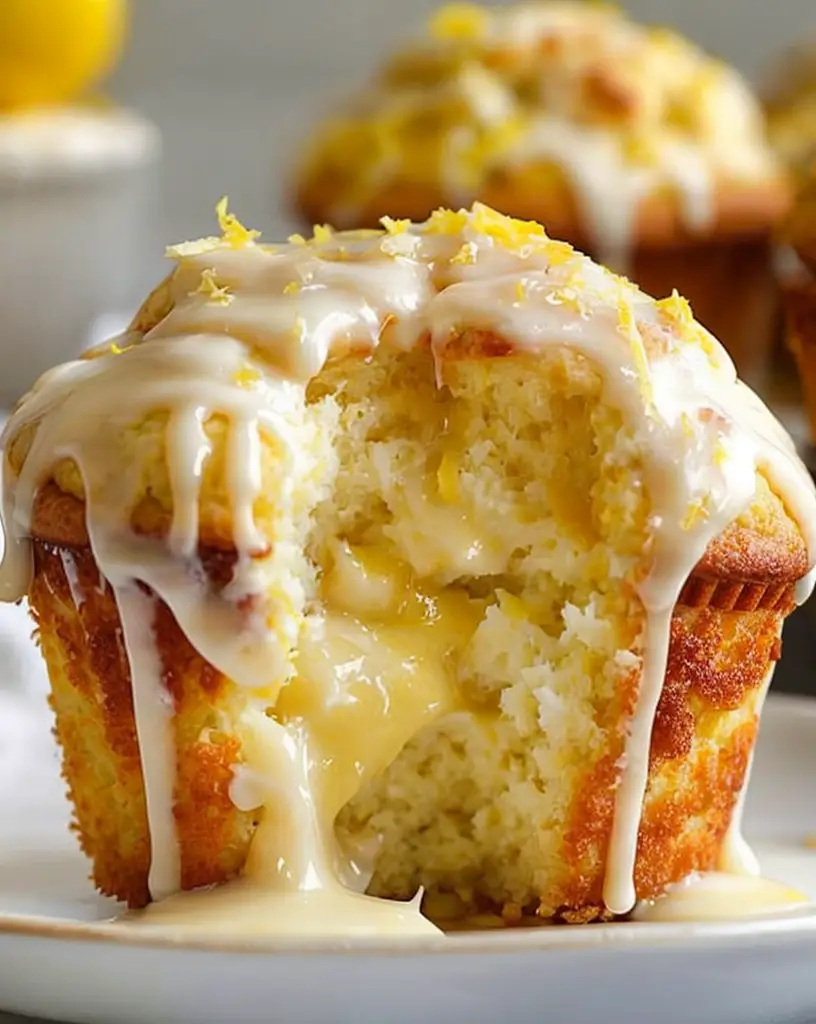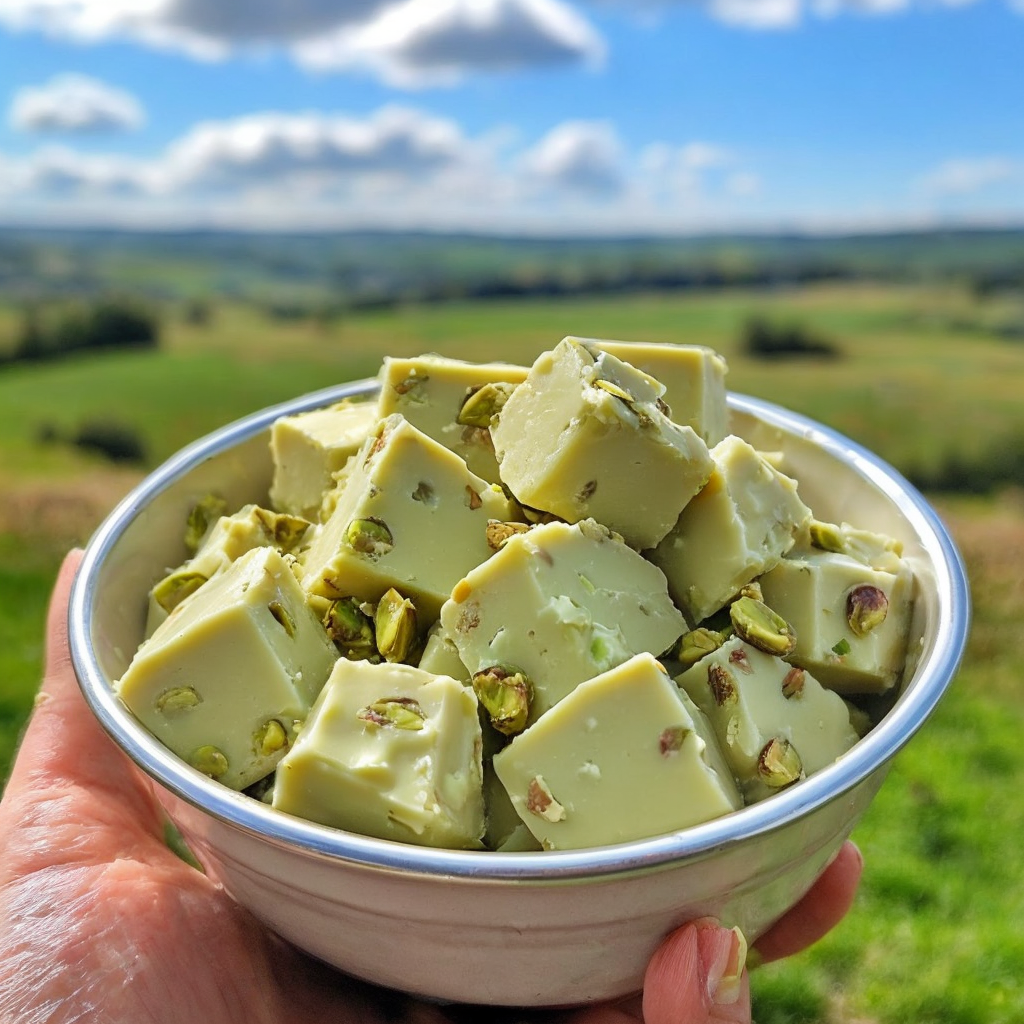Strawberry Crunch Cheesecake Bites: A Delightful Indulgence
Strawberry Crunch Cheesecake Bites bring together the fresh brightness of strawberries with the creamy richness of cheesecake, all wrapped up in a bite-sized delight. Perfect for summer gatherings, these cheesecake bites are light, refreshing, and irresistibly delicious. The sweet and tangy notes of strawberry jam blend seamlessly with the buttery crumble, creating a dessert that’s both indulgent and memorable. Whether you’re looking to charm guests or simply treat yourself, these bites are a must-try.
Immersed in a golden crust and crowned with a crumbly streusel, every Strawberry Crunch Cheesecake Bite is a burst of flavor. With their simple preparation and stunning appearance, they effortlessly bridge the gap between casual and gourmet. The vibrant pop of red from the strawberries is as visually striking as it is tantalizing to the palate.
Quick Recipe Highlights
- Flavor Profile: A delightful blend of sweet, creamy cheesecake and juicy, tangy strawberries.
- Texture: Creamy cheesecake paired with a crunchy top and a smooth fruity center.
- Aroma: Inviting scent of baked pastries with a hint of strawberry freshness.
- Visual Appeal: Bright red strawberry topping paired with a golden, crunchy crust.
- Skill Level Needed: Basic baking skills with a focus on assembling layers neatly.
- Special Equipment: Mini muffin tin, food processor, and hand mixer recommended.
Recipe Overview
- Difficulty Level: This medium-difficulty recipe requires patience when layering and a gentle hand when assembling the base and filling.
- Category: Serves as a delightful dessert, perfect for any festive occasion or casual afternoon treat.
- Cuisine: A modern take on classic cheesecake, highlighting the fresh fruity flavors typical of contemporary American treats.
- Cost: Relatively inexpensive, with most ingredients being pantry staples and strawberries being the primary fresh component.
- Season: Ideally enjoyed in spring and summer, when strawberries are at their peak sweetness.
- Occasion: Perfect for afternoon teas, bridal showers, and summer picnics, offering both elegance and ease of serving.
Why You’ll Love This Recipe
From the first bite, Strawberry Crunch Cheesecake Bites captivate with their layered textures and sublime flavors. The creamy, velvety cheesecake balances beautifully with the sweet-tart strawberries. This recipe is a canvas for sensory delight, with contrasts that are both complex and harmonious.
For those who love to entertain, these bites are a dream. Easy to prepare in advance, they enable you to focus on enjoying the occasion. You can savor the rich textures and vibrant flavors while your guests marvel at their delightful presentation. They are conveniently portioned for mess-free enjoyment.
Nutritiously, while these bites are a treat, they incorporate strawberries—a source of vitamin C and antioxidants—making them a relatively lighter choice for indulgence. The inherent portion control of bite-sized treats also aids in avoiding overindulgence while still savoring luxurious flavors.
Serving these cheesecake bites can uplift any gathering, offering a touch of joy and indulgence. They can easily be adapted to fit different themes or tastes, making them a versatile choice for any host. Additionally, their visual appeal makes them a picture-perfect offering.
Affordability and ease of preparation mean that you can indulge without stretching your budget. Many of the ingredients are pantry staples, and the preparation only requires minimal equipment. This accessibility makes these treats attainable and truly rewarding.
Historical Background and Cultural Significance
Cheesecake itself boasts a rich history, evolving from ancient Greek roots as a savory dish into the luxurious sweet versions known today. It traversed multiple cultures, with each leaving its unique mark—Italian ricotta cheesecakes, New York’s creamy style, and beyond. This evolution highlights the cultural importance of transforming simple ingredients into beloved classics.
Over time, as refrigeration became widespread, the creamy, cold cheesecake style became increasingly popular in North America. The tradition of incorporating fresh, seasonal fruits with cheesecake echoes historical practices, as early versions often included natural sweeteners and decorations.
Modern variations, like the Strawberry Crunch Cheesecake Bites, draw on both the storied past and today’s culinary advancements. They reflect a cultural appreciation for classic flavors combined with a modern approach to presentation and serving size, making them a staple in both traditional and contemporary kitchens.
Regional variations abound, with flavors and methods differing across continents. In the U.S., it’s not uncommon to find local fruits used in cheesecake creations, inspired perhaps by a bounty of country fairs and summer markets, each region showcasing its specialty crop in a new dessert form.
Ingredient Deep Dive
Cheesecake Crust: This essential component provides the foundational texture and flavor, often utilizing graham crackers for their nostalgic taste and reliable crunch. This staple in American pies retains its status for versatility, easily adapted with nuts or spices for depth.
The richness of cream cheese forms the heart of any cheesecake, offering both creamy texture and tangy taste. Originating from the development of fresh cheeses in the 19th century, this key ingredient remains unchanged, a testament to its perfect balance and durability.
Strawberries serve as the star, chosen both for their vivid hue and sweet, refreshing taste. Seasonally celebrated, they’re packed with vitamins, turning this dessert into a joyous nod to summer’s bounty. Selecting ripe, fragrant berries ensures the best outcome in both taste and appearance.
Sweeteners like granulated sugar play a dual role—enhancing the inherent sweetness of the strawberries while balancing the tang of cream cheese. Use sparingly to ensure the natural profiles shine without being overpowered, maintaining an ideal equilibrium.
Even the addition of vanilla extract merits attention—this nuanced flavor brings warmth and complexity, subtly elevating the other flavors without dominating them. Use pure extract to truly make the delicate balance of cheesecake layers shine.
Common Mistakes to Avoid
- Overmixing the cheesecake batter can lead to a dense texture. Mix just until combined to maintain airiness.
- Failing to properly chill the bites can result in difficulty removing them from the tin. Allow adequate cooling time.
- Using unripe strawberries will provide lesser flavor impact. Always select ripe and fragrant berries.
- Not pressing the crumb base firmly enough may cause crumbling. Use moderate pressure for a solid foundation.
- Skipping the parchment liners could lead to difficult removal and presentation issues. Prepare the tin with liners.
- Ignoring ingredient temperatures can affect texture and flavor balance. Ensure cream cheese is softened before use.
- Underestimating the baking time may yield under-set centers. Use a toothpick to test readiness before removing from oven.
- Adding too much sugar may overshadow the fruit’s natural sweetness. Stick to recommended quantities for balance.
Essential Techniques
Perfecting the crust involves achieving the right degree of firmness. Pressing the crumbs with an even, firm hand ensures a stable base without becoming too compacted, a common pitfall. Watch for slight browning as an indicator of doneness, providing a necessary crispness.
Proper cheesecake batter mixing is vital. Overblending can introduce excess air, leading to cracking. Use a gentle, consistent folding motion to combine ingredients smoothly, focusing on a creamy consistency without overworking.
Monitoring baking time prevents overcooking. Keep a close eye on the toaster oven and use visual cues, such as a faint browning on the edges and a slight jiggle in the center, to perfect doneness and texture.
Using a food processor helps achieve uniform consistency when making the crust, avoiding larger chunks which can disrupt the bite-sized format. This tool, though not mandatory, greatly enhances outcome precision.
Refrigeration time is key. Allowing at least two hours, preferably overnight, facilitates setting and enhances the melding of flavors. Rushing this last step can compromise both texture and flavor profile.
Pro Tips for Perfect Strawberry Crunch Cheesecake Bites
Ensure cream cheese is at room temperature for easy blending and smooth texture. Cold cream cheese will clump and negatively affect the cheesecake’s final consistency.
Use parchment liners in the mini muffin tin to help with effortless removal and maintain neat presentation. This avoids frustration and enhances appeal.
Select strawberries based on color and scent. The redder and more fragrant they are, the better they will taste in the final product, and this also boosts visual quality.
Craft the perfect crumb using equal parts melted butter and crushed crackers or cookies, ensuring just enough moisture to hold together without becoming greasy.
Chill fully before slicing or serving. This step is essential; it allows the cheesecake to firm up sufficiently and develop its signature creamy texture.
Consider experimenting with extracts—almond or lemon can offer unique undertones that highlight the freshness of strawberries, personalizing your bites with subtle twists.
Variations and Adaptations
Regional adaptations can include replacing strawberries with other local fruits such as raspberries or blackberries for a different flavor profile. Each berry offers unique sweetness and acidity, which can inspire whole new flavor experiences.
To fit seasonal themes, consider topping each bite with a dollop of whipped cream flavored with spices like cinnamon or nutmeg in colder months, adding warmth and complexity to the base flavors.
Dietary modifications might involve substituting standard graham crackers with gluten-free alternatives, keeping the crust’s essential roles while accommodating gluten sensitivities.
Experiment with different flavors by incorporating citrus zest into the cheesecake batter, or swirl in chocolate or caramel for a rich, decadent variation.
Textural modifications can be achieved through crust variations—experiment with adding chopped nuts for additional crunch or seeded jams for a unique mouthfeel.
When considering presentation alternatives, play with slicing for unique serving options—carve each bite into halves or quarters for a more sophisticated offering, enhancing your guests’ tasting experience.
Serving and Presentation Guide
Opt for simple yet elegant plating techniques. Arrange the bites on a porcelain platter to highlight their colorful strawberry top, keeping them visually appealing.
For garnishing, consider a drizzle of white chocolate or a sprinkle of powdered sugar, enhancing the visual flair without overpowering the primary flavors.
Traditionally, these bites can be served with additional strawberries on the side, offering guests a chance to explore complementary textures.
Embrace modern serving suggestions like placing each bite in a cupcake liner, enhancing both hygiene and convenience, especially for buffet-style service.
Mind temperature by serving these bites chilled, preserving their creamy consistency and ensuring optimal flavor delivery in each bite.
For portion control, pre-plate single servings with small dessert forks, subtly guiding your guests to appropriate portions and enhancing your event’s flow.
Wine and Beverage Pairing
For wine pairings, a chilled glass of Prosecco or Moscato complements the sweetness of the bites, offering a crisp counterpoint to the creamy base.
Non-alcoholic alternatives include a refreshing strawberry lemonade or lightly spiced iced tea, both enhancing the fruity undertones without overwhelming subtler notes.
For larger gatherings, consider coffee or tea pairings—lightly brewed green tea offers a cleansing contrast, while silky, rich coffee accentuates the dessert’s sweetness.
Serve beverages at optimal temperatures to maximize their pairing effectiveness—ensure wines are lightly chilled, and teas are at a palatable warmth to enhance each bite.
Strong emphasis on enjoying each drink alongside the desserts lies in prompt, considerate serving understood through attentive hospitality and insight into guest preferences.
Storage and Shelf Life
Store these bites in an airtight container in the refrigerator, ensuring prolonged freshness and ideally maintaining their texture for up to five days.
Maintain the refrigerator temperature consistently around 35-40°F to prevent any spoilage or flavor degradation, ensuring every bite retains its intended notes.
Appropriate container selection, such as shallow, lined in a single layer or with parchment to separate layers, prevents smudging and damage to the bites’ appearance.
Look for signs of spoilage, such as discoloration or off odors, and discard any affected pieces, prioritizing safety and quality in your kitchen.
For reheating or serving, allowing these bites to sit at room temperature for 10 minutes lets flavors and consistency stabilize, optimizing your dessert experience.
Strong guidelines emphasize avoiding freezing, as this can alter both texture and quality, diminishing the tasting experience when thawed from frozen.
Make Ahead Strategies
Consider a make-ahead strategy by preparing and chilling the bites a day before, saving valuable time on the day of your event.
Store components separately until the final stages—prepare the crust and filling and assemble prior to serving, maintaining a fresh and appealing presentation.
Assess and plan your prep timeline around chilling stages, allowing the cheesecake sufficient time to set while keeping work manageable and enjoyable.
Enhance quality by acting on assembly tips, like uniformly distributing strawberries across each bite, ensuring every portion receives the intended flavor mix.
Utilize controlled stages for reheating slightly chilled bites to enhance flavor experience, mindful of not over-servicing a fresh dessert soundly engineered for enjoyment.
Conclude with fresh additions such as delicate herbs or edible flowers to embolden the visual promise of your dessert, surprising guests with unexpected flourishes.
Scaling Instructions
Scaling down by halving the recipe is easily achieved by adjusting ingredient quantities without altering equipment needs or preparation techniques and recipes.
Doubling or tripling can call for larger or additional mini muffin tins but poses few challenges, given each batch can be managed and assembled similarly.
Equipment adjustments like additional muffin pans or expanded workspace may facilitate production when scaling up, ensuring smooth handling of increased portions.
Timing modifications should calculate additional chill stages, ensuring optimal result achievement while remaining flexible with space and timing demands.
Storage considerations for larger batches rely on coordinating setups like multiple trays and extra containers to maintain organized freshness.
Every scaling maneuver reflects back on a well-devised plan; execute confidently from your close understanding of both recipes and guest demands.
Nutritional Deep Dive
Explore the macro breakdown: cream cheese provides fats for satiety, strawberries offer carbohydrates, and eggs and dairy contribute proteins, creating a balanced dessert choice.
Micronutrient analysis highlights vitamin C from strawberries, calcium from cream cheese and dairy, and essential minerals like phosphorus within the ingredient list, providing nutritional bonuses.
Dessert’s health benefits arise from its combination of indulgence with natural fruit, allowing a treat that’s less sugar-laden than comparable choices when proportioned adequately.
Portion analysis shows effective weight management through bite-sized servings, aiding conscious enjoyment for you or hosting guests.
Strategize dietary considerations around knowing your guests or personal preferences, always opting towards mindfulness in serving suggestion preparation.
Greater insight into balanced offerings enhances your cooking grasp, nuanced by empathy in your dessert creation outreach for those in your circle.
Dietary Adaptations
Adapting to a gluten-free diet might involve swapping regular graham biscuits with similarly flavored gluten-free varieties, keeping all texture highlight opportunities intact.
For dairy-free renditions, explore vegan cream cheese options and dairy-free yogurt, upkeeping the essential creamy base without loss of cheesecake’s iconic texture.
Vegan adaptations could involve exploring aquafaba as egg replacement, incorporating plant-based margarine so that key traits within the bites remain effortlessly embodied.
Consider a low-carb approach by swapping traditional sweetness with alternatives, staying ahead on your sweetness game while maintaining favored flavor outcomes.
Keto-style explorations can pivot on coconut flour crusts or syrups like monk fruit’s unique, versatile profile, broadening your reach in creative dessert interpretations.
True emphasis on dietary respect enhances welcoming dessert exchanges, branching into thoughtful adaptations that reflect evolving desires and joys.
Troubleshooting Guide
Texture issues, such as crust disintegration, often root in poor compacting of crust elements. Ensure good pressure when forming each base.
Flavor imbalances might stem from either over- or underuse of sugar. Measure accurately and taste test along the process, aiming to keep prominent elements clear.
Temperature problems can emerge if the cheesecake sets unevenly, always chilling evenly and tweaking times for consistent internal firmness.
Equipment challenges often lie in lack of liners resulting in stuck bites. Plan ahead and line each tin cavity smartly, avoiding a frustrating experience.
Ingredient substitutions like instant whip cream best replaced with a slightly higher ratio for plant-based thickeners to maintain needed fluff characteristics.
Timing concerns reflect improper scheduling or chilling, but stricter date plan adherence and step-by-step readiness sees avoiding this pitfall first.
Recipe Success Stories
Engage with community feedback, celebrating reinterpretations or adjustments to recipe structures based on shared ingredient finds—a robust platform of global flavor play.
Variation successes convey reader triumphs bringing flavor additions or replacements into joyous reviews, ensnaring newfound celebrations shared through digital reach.
Adaptation stories arise, often born from needing dairy-free solutions, allowing gratifying tales of cookbook diversions and empathy-adhering outcome explorations.
Reader suggestions amplify recipe integrity, noting alternate preparation pathways that reframe once-static protocols into dynamic soul-infused dessert chronicles still adapting.
Real photography tips emerge from visual storytellers—akin to you—offering garnishing, lighting, and framing cues, with each serving moment seamlessly encapsulated and reposted.
Frequently Asked Questions
A: Absolutely! You can make them a day ahead; just ensure they are kept chilled until ready to serve.
Q: What if I don’t have mini muffin tins?
A: You can use a standard muffin tin but adjust baking times accordingly and be prepared for larger-sized portions.
Q: Can I freeze these cheesecake bites?
A: Freezing is not recommended as it might alter the cheesecake’s creamy consistency and flavor balance.
Q: How can I make these bites less sweet?
A: Reduce the sugar quantity in both the batter and crust slightly for milder sweetness.
Q: What’s the best way to soften cream cheese?
A: Leave it at room temperature for about 30 minutes before use, or microwave on low in short bursts if in a rush.
Q: Could I use frozen strawberries?
A: Fresh strawberries are best for this recipe due to their vibrant flavor and texture.
Q: What can I use instead of Graham crackers?
A: Digestive biscuits or Oreos work well as alternatives, providing diverse flavor morphs suitable within crust offerings.
Q: Is there a particular type of vanilla extract best used?
A: Pure vanilla extract provides a more robust flavor, ensuring your bites carry authentic underlying warmth.
Q: Can these bites be colored differently?
A: Using natural food coloring or alternative jams allows diverse color ideas without altering the essential recipe’s core joys.
Q: Might dehydration affect strawberry flavor?
A: Pay heed to strawberry freshness, keeping refrigerated until needed thereby preventing dehydrating exposure, ensuring vibrant results remain intact.
Additional Resources
Explore our related recipes highlighting quick dessert fixes that charm, ideal companions when Strawberries bridge other seasonal confections.
Dive into technique-specific guides on crust making and filling techniques, perfect for refining your entrance into cheesecake innovation realms.
Maximize daily cooking successes validated from closely sourced, up-to-date ingredient information, broadening how different components heighten shared dishes.
Equipment recommendations reflect ideal results matched through controlled measurements and impactful cooking routines.
Seasonal recipe variations speak to colorful gardener palettes noted in fruit placements conveniently accessible around your basin.
Through knowledge, practical or experiential gleaned, passions lead styling’s true discoveries—holding more than taste alone satisfied.
Join the Conversation
Connect to broader dessert narratives across social media platforms. Classic recipes like these excite followers globally, recalling fond memories or sharing heartfelt inspiration.
Photography skills enhance your depicted baking tales, with style tips unlocked via pointed garnishing endeavors that neat frames joy onlookers visualize alongside you.
See enduring recipes celebrated through enthusiastic reviews, where communal engagement arises from each shared bite’s loving admiration.
Online forums offer a venue for recipe variations, where insights capture collective creativity portrayed genuinely and widely expressed.
Within a vibrant shared community, your experiences grow through supportive engagement—friends aligned in discovering joy across ever-stretching favorite flavor pursuits.
The Recipe
Strawberry Crunch Cheesecake Bites
Serves: 12
Prep Time: 30 mins
Cook Time: 15 mins
Total Time: 45 mins
Kitchen Equipment Needed
- Mini muffin tin
- Food processor
- Hand mixer
- Parchment liners
- Mixing bowls
Ingredients
- 1 cup graham crackers, crushed
- 1/3 cup butter, melted
- 2 tablespoons sugar
- 1 package (8 oz) cream cheese, softened
- 1/4 cup sugar
- 1 teaspoon vanilla extract
- 1 egg
- 1/2 cup strawberry jam
- Fresh strawberries for topping
Directions
- Preheat your oven to 350°F (175°C) and line a mini muffin tin with parchment liners.
- In a food processor, combine crushed graham crackers, melted butter, and sugar until well mixed.
- Press about a tablespoon of the crumb mixture into each muffin cup, firmly pressing into the base.
- In a mixing bowl, beat softened cream cheese with sugar and vanilla until smooth.
- Stir in the egg and mix until just combined. Do not overmix to keep the texture light.
- Spoon cream cheese mixture evenly over the crumb bases in each muffin cup.
- Bake in the preheated oven for 10-15 minutes, or until the centers are set. Let cool completely.
- Spoon a small amount of strawberry jam over each cheesecake. Top with a fresh strawberry slice.
- Chill bites in the refrigerator for at least 2 hours before serving for best results.
Recipe Notes
- For a citrus twist, add zest of one lemon to the cream cheese mixture.
- Ensure cream cheese is at room temperature for optimal mixing results.
- Store bites in an airtight container in the fridge for up to five days.
